In programming, frameworks are a collection of modules and software packages that help automate and simplify app development. In the same way, Javascript frameworks provide a collection of pre-written code that developers can leverage to fast-track app development instead of starting development from scratch.
In this guide, we explore some of the top Javascript frameworks in 2024.
What is JavaScript?
JavaScript is a popular scripting and programming language primarily for developing dynamic websites. It’s an OOP (object-oriented) programming language that adds interactivity to web pages. It works alongside HTML and CSS to create dynamic and interactive web pages that provide an immersive user experience.
Javascript enriches the functionality of web pages by implementing features such as 2D / 3D animations, interactive maps, form validation and so much more.
With JavaScript, you can build full-blown web and mobile applications, real-time networking apps, browser-based game apps, and even command-line tools. Given its versatility, Javascript is used in front-end, back-end, and full-stack application development.
What are JavaScript Frameworks?
JavaScript frameworks are simply a collection of libraries containing Javascript code. These frameworks are an essential part of modern front-end development as they provide developers with pre-written Javascript code which simplifies the development process.
Frameworks provide a template for building and handling common programming features. In so doing, they help developers create complex and feature-rich applications faster and more efficiently as opposed to building them from the ground up.
What is the Future of JavaScript Frameworks
The future of JavaScript frameworks looks promising. We will see more continued innovation, better-improved tools for developers, and enhanced performance optimization. The demand for quick and responsive web apps will push for lighter and more efficient frameworks.
As web technologies evolve, frameworks will adapt to support emerging trends like serverless architecture and Progressive Web Apps (PWAs). With the growing importance of mobile development, cross-platform compatibility will remain a key focus. Overall, JavaScript frameworks will play a pivotal role in shaping the future of web and app development, ensuring better user experiences and a more connected online world.
Statistics and Facts about JavaScript
JavaScript has seen impressive growth and uptake among developers over the years. According to Statista, JavaScript is the most popular programming language among developers in 2023 with an impressive 63.61% usage. It is used by nearly 98.8% of websites as a client-side programming language.
In addition, it provides a broad ecosystem of frameworks including React, Vue.JS for front-end development, and Node.JS and Express for backend development.
JavaScript is supported by all major browsers such as Google Chrome, Firefox, Safari, Brave Browser, Opera, and Microsoft Edge.
Popular websites built using JavaScript include Netflix, LinkedIn, Amazon, Google, Twitter, and Medium, to mention a few.
Top JavaScript Frameworks
With a wide range of frameworks available, choosing the best one can be challenging for you. To help you decide, here are the list of top JavaScript frameworks and libraries you should consider learning.
1. ReactJS – Front-end JavaScript Library
Developed and maintained by Meta, Facebook’s parent company, ReactJS is one of the most popular open-source Javascript frameworks for building beautiful, neat, and well-organized user interfaces.
React JS is a versatile framework used to develop mobile, web, and desktop applications. It is a component-based Javascript library that enables developers to reuse various components to build applications in the shortest time possible.
React provides a component-based architecture. This is where the UI comprises independent and reusable self-contained components. This approach improves code reusability and simplifies development. Furthermore, it makes maintaining applications a whole lot easier.
In addition, React employs a virtual DOM (Document Object Model). This is where a representation of the real DOM is placed in memory, allowing for faster updates and improved performance.
React prides itself on having a large community of developers and a rich ecosystem comprising a wealth of tools, frameworks, and third-party libraries.
According to a survey conducted by Statista, React comes second after Node.JS as one of the most favored front-end Javascript frameworks with 40.58%.
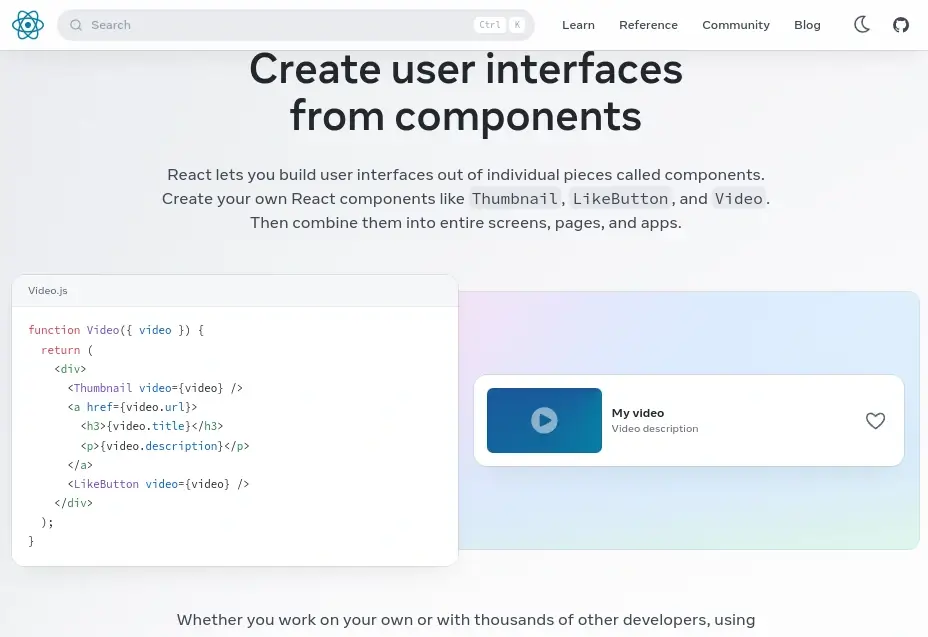
2. Node.JS – Back-end JavaScript Runtime Environment
Released in 2009, NodeJS is a free and open-source Javascript runtime environment based on Google Chrome’s V8 engine. Node.JS is primarily used to run server-side and dynamic web applications and is the only framework that executes Javascript outside of a web browser.
NodeJS uses an event-driven, non-blocking asynchronous model that enables it to handle numerous concurrent connections with ease. This makes it a perfect choice for traditional web apps, APIs, and scalable real-time applications that handle heavy traffic.
One of Node.JS standout features is its lightweight nature, combined with the non-blocking architecture, which contributes to its efficiency. Developers find it a breeze to create applications swiftly, and NodeJS is known for its ability to handle complex tasks while maintaining top-tier performance.
In the NodeJS ecosystem, Node Package Manager (npm) is a powerful tool that plays a vital role in managing packages, granting developers access to a wealth of libraries and modules. This repository of packages enables developers to add pre-built functionality that simplifies the process of development effortlessly.
At the time of writing this guide, Node.JS holds the first position as the most popular front-end and back-end Javascript framework with a 42.65% market share according to Statista.
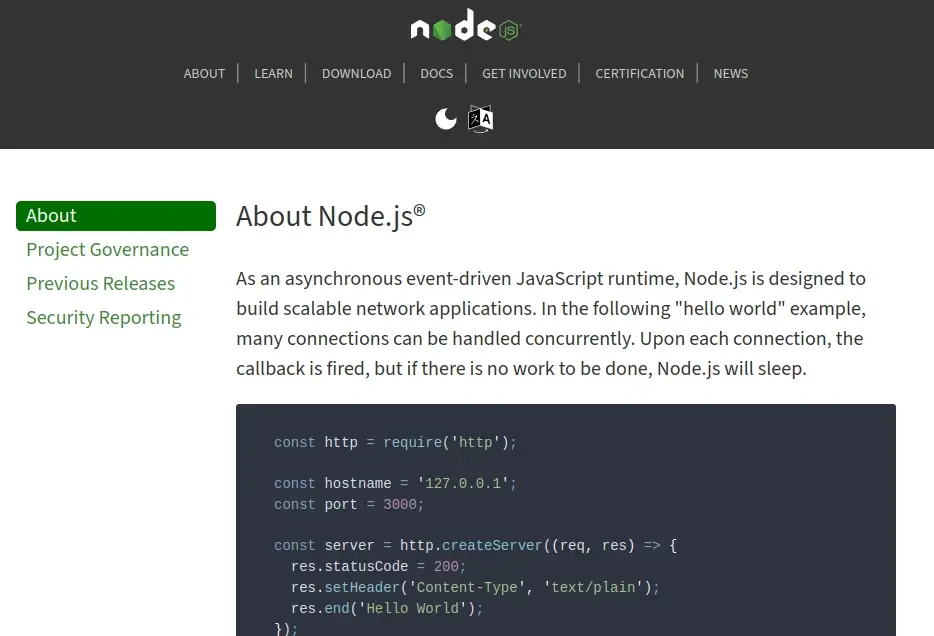
3. Vue.JS – The Progressive JavaScript Framework
Vue.JS is a front-end JS framework that allows developers to create elegant and beautiful user interfaces. Vue.js was developed in 2016 as a way to consolidate all the best parts of Angular.js and build a dedicated tool around it.
In the end, the data-driven and data-binding approach of working with HTML-based Document Object Model (DOM) won against dealing with DOM directly. Vue.js stacks on top of JavaScript, CSS, and standard HTML to provide a declarative and component-oriented programming model.
Vue’s framework and ecosystem have all the basic features needed for front-end development. But the web is pretty dynamic, and the web applications you are building usually vary in size and complexity.
To mitigate this Vue follows a flexible and incrementally adoptable design, as the core library is exclusively centered around the view layer.
Despite its small footprint, Vue has gained popularity in recent years as ‘”The Progressive JavaScript Framework“. This is because Vue.js is capable of building complex, single-page web apps through a combination of web tools and libraries (Dual Integration Mode).
Unlike Google’s Angular.js and Facebook’s React.js, Vue.js is developed and financed entirely by the community. However, Vue continues to enjoy widespread popularity despite lacking the financial support that members of big tech companies have.
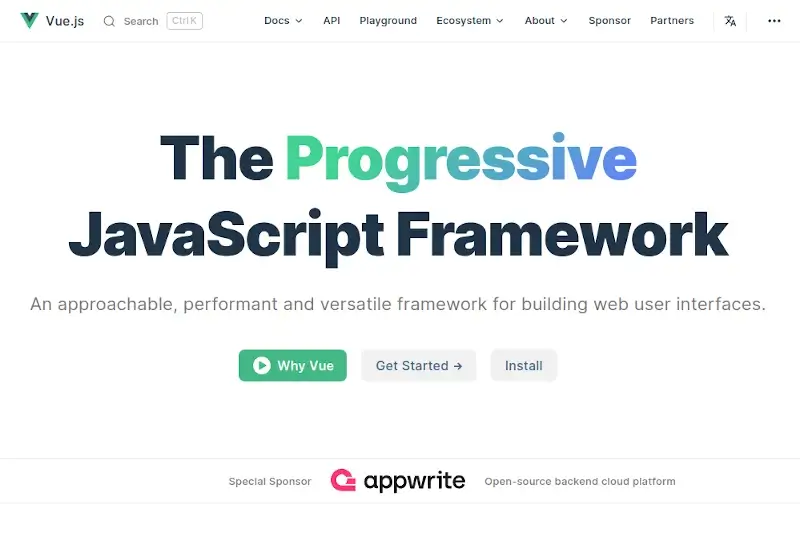
4. Svelte – Front-end Component Framework
Since its initial release in 2016, Svelte has grown in huge strides to become one of the most solid and popular front-end component frameworks that is used for building fast and flexible web applications.
Svelte is a web development tool that makes coding easier. It looks a lot like regular web languages HTML, CSS, and JavaScript, but When you’re done writing your code, Svelte complies with your code and turns it into super-fast, efficient code in no time and it doesn’t need extra stuff to run in your web browser, so your apps are quick and lightweight.
Svelte is loved for its simplicity and ease of use. It encourages component-based architecture, just like React and Vue, but it does so in a way that minimizes the amount of code you need to write.
Svelte’s reactivity system automatically updates the DOM when your data changes, eliminating the need for complex state management.
Overall, Svelte is a powerful and innovative framework that’s well-suited to build web applications with a focus on performance and developer productivity. As the web development landscape evolves, Svelte has emerged as a compelling choice for those looking to create efficient, maintainable, and enjoyable web applications.
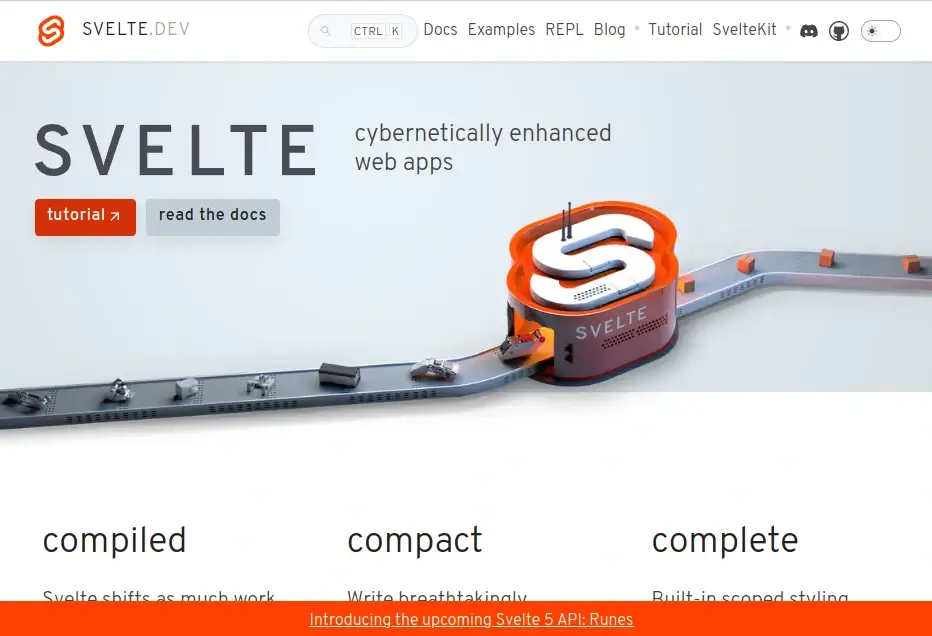
5. Next.JS – The React Based Framework
Next.JS by Vercel is an open-source JavaScript framework for building server-side rendered React apps. It is fast, lightweight, and an ideal choice for small and medium-sized projects.
Essentially, Next.js conveniently allows you to work with React. The framework contains several powerful components and features such as routing, automatic code splitting, and hot module reloading which make developing React applications faster and simpler.
Next.js was designed to address the ever-changing needs of web development, particularly in response to the rise of single-page applications (SPAs).
As the SPAs, blur the distinction between frontend and backend, with the entire application loading in the user’s browser and a server-side framework managing the backend, Next.js provides an effective solution to streamline the development of these modern web applications.
Next.js removes the need for a server-side framework by allowing you to build React applications that are server-rendered. This means that the user browser will load the entire HTML page together with the necessary assets like CSS files, JavaScript files, and images.
Next.js also comes with in-built support for React components, enabling you to build high-end user interfaces without the stress that accompanies state management, and routing. It is also important to note that Next.js is an ideal choice for SEO since it functions as a minimal, static site generator.
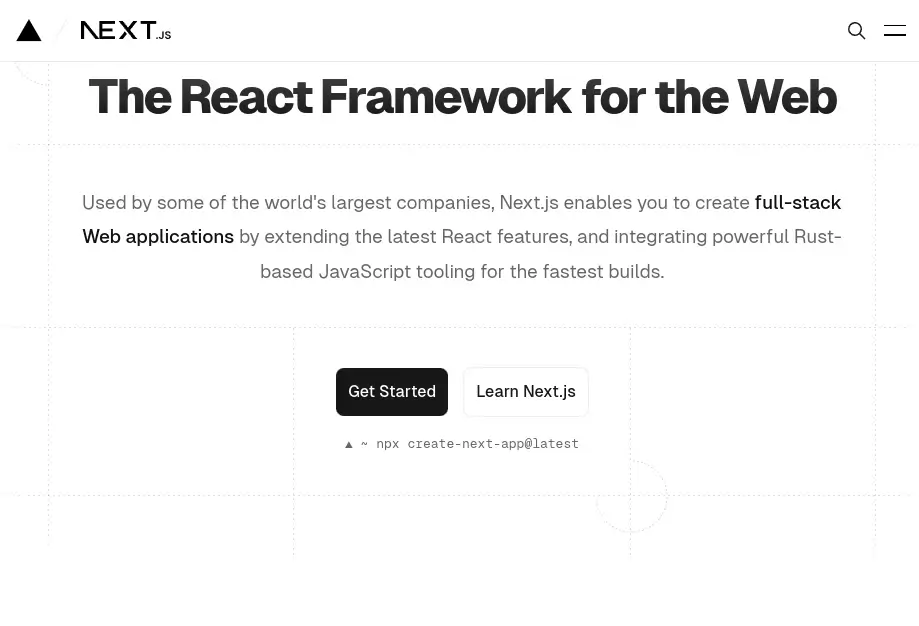
6. Ember.JS – A Framework for Ambitious Web Developers
Ember.JS is an MVVM (Model-View-ViewModel) framework that focuses on convention instead of configuration, which means that the majority of the framework functionality relies on users consistently naming elements in accordance with predefined rules.
One noteworthy aspect of Ember is its integrated router, a feature often available only as an optional add-on in other JavaScript frameworks. It elevates the importance of routing within the framework.
Ember’s creators have taken a unique approach by prioritizing client-side bookmarking and the sharing of URLs. They also favor a desktop Model-View-Controller (MVC) framework model over a server-side MVC model.
In summary, Ember combines the productivity of a native user interface framework with the ability to support shareable URLs, making it a comprehensive choice for web development.
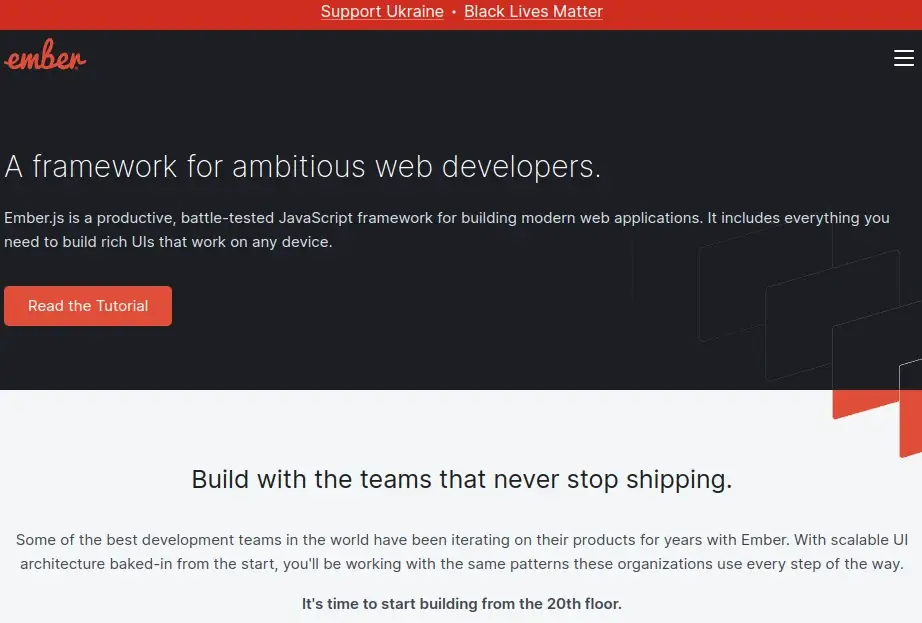
7. Nuxt.js – The Intuitive Vue Framework
Nuxt.js is a free and dynamic server-side JavaScript framework built to work seamlessly with the Vue.js ecosystem. Developers mainly use it to design sophisticated, back-end rendering applications and it also offers support for progressive web apps.
Although Nuxt.js is based on Vue.js it is not a replacement for Vue.js as it can’t work alone, instead, Nuxt.js optimizes applications created with Vue.js.
You can describe Nuxt.js as a combination of Vue.js libraries and packages like Vue Router, Vuex, Vue meta, Vue server renderer, PostCSS, and webpack.
Nuxt.js is a wonderful option for creating Pre-rendered Static pages, Server-side rendered web applications (SSR/universal applications), and Single-page web applications (SPA).
Nuxt is also among the strongest JavaScript frameworks as it is capable of creating universal applications, a universal app is a piece of JavaScript code that runs on both the server and client end.
Unlike conventional single-page apps that are plagued with performance issues, Universal apps deliver high performance and enhance SEO by availing content swiftly for search engine algorithms to crawl.
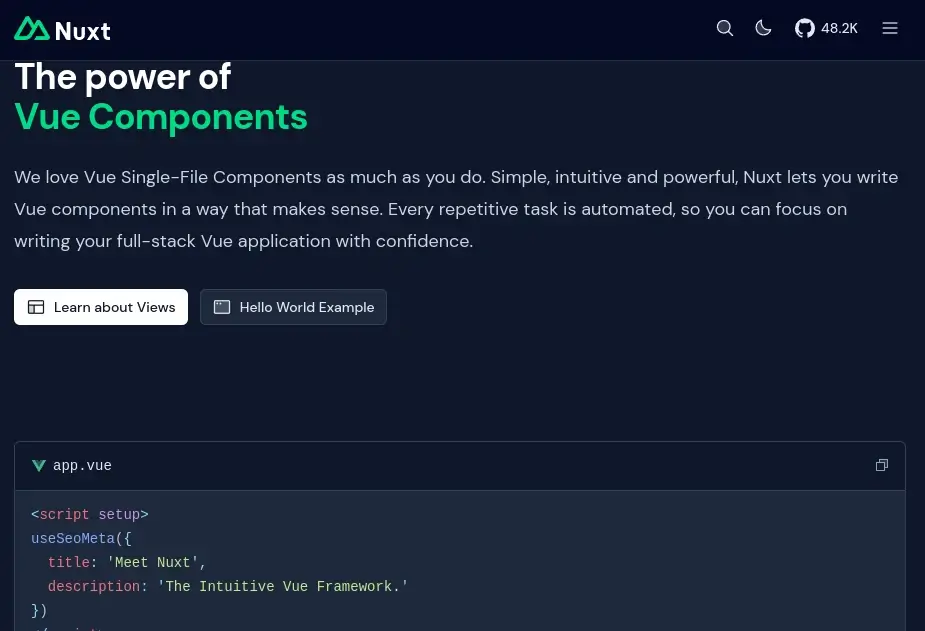
8. Aurelia – Front-end JavaScript Framework
Aurelia is a free UI JavaScript framework designed to create web applications for mobile devices, browsers, and desktops. Durandal Inc. built Aurelia from the ground up using state-of-the-art tooling and ECMAScript with complete support for TypeScript.
Its architecture comprises a set of curated libraries and components that have been integrated with modern JavaScript. Aurelia adheres to a model-view approach that enables you to follow system patterns by reducing the volume of code needed to create a web application.
Aurelia has a very smooth learning curve, but still maintains its power. With Aurelia, you only need to learn a few sets of patterns before you can begin building your application.
Furthermore, it takes a modern approach to Routing and UI composition. Although it’s a full-stack framework, it is made up of a series of libraries that work in tandem using well-defined interfaces – making it fully modular.
This means that a web application only needs to specify the particular dependencies that it requires. Aurelia’s modular approach also means that individual components can be interchanged with minimal confusion.
Aurelia has been designed to be scalable, which makes it ideal for use with third-party frameworks and libraries.

9. Meteor.js – Isomorphic JavaScript Web Framework
Meteor.js, or Meteor, is a full-stack, open-source, back-end Node.js framework that is mainly free. Instead of using several frameworks and tools, Meteor simplifies the app development process by providing a full-stack ecosystem.
Meteor includes a powerful assortment of technologies for creating connected-client reactive apps. Meteor comes out of the box with a build tool, as well as a selection of packages from the JavaScript community like Node.js, Angular, Vue.js, React, and more.
Additionally, Meteor can also integrate with MongoDB and Cordova to create hybrid applications.
It greatly enhances the versatility and fluidity of the user experience by delivering updates to clients without them needing to reload the website. This makes Meteor a great option for building real-time web and mobile apps since real-time data updates are an integral part of its infrastructure.
Another advantage of Meteor is its short learning curve. If you are competent in JavaScript working with Meteor is easy, since Meteor.js uses JavaScript code for both the front-end and back-end.
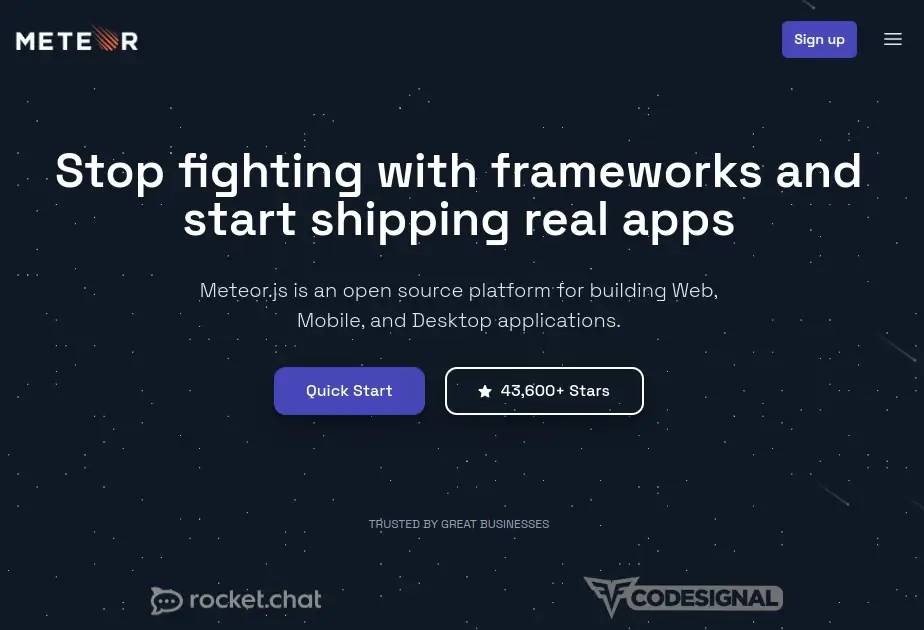
10. Express.JS – Node.js Web Application Framework
Express.js offers users a unique set of features for web apps, routing, HTTP requests and responses, and middleware for creating large-scale applications. It also ships with a command-line interface tool known as Node Package Manager, which you can use to find developed packages.
The express.js framework also strictly enforces the Do Not Repeat Yourself(DRY) rule. The DRY principle reduces repetitive software patterns using data normalizations.
Express.js is simple, agile, and also the fastest Node.js framework. The framework provides a minimalistic design that simplifies the app development process.
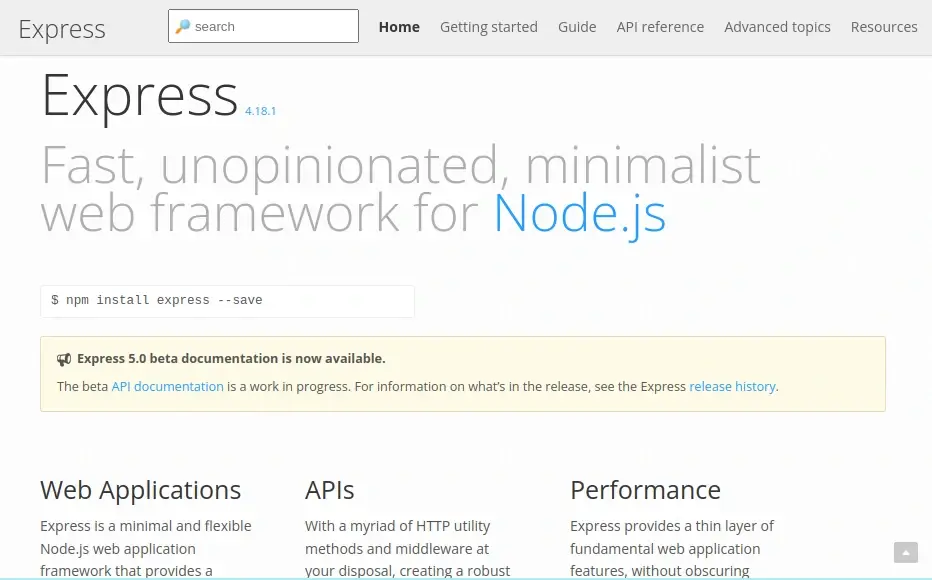
Conclusion
The Javascript ecosystem is vast and dynamic, which means that there is no single JavaScript framework that will solve all your project needs. However, each framework has its unique capabilities.
To choose the right framework you need to consider your project’s needs and understand which framework all combination of frameworks will give you the most convenience.
That’s all for this guide. We have listed some of the top Javascript frameworks you should consider learning.
